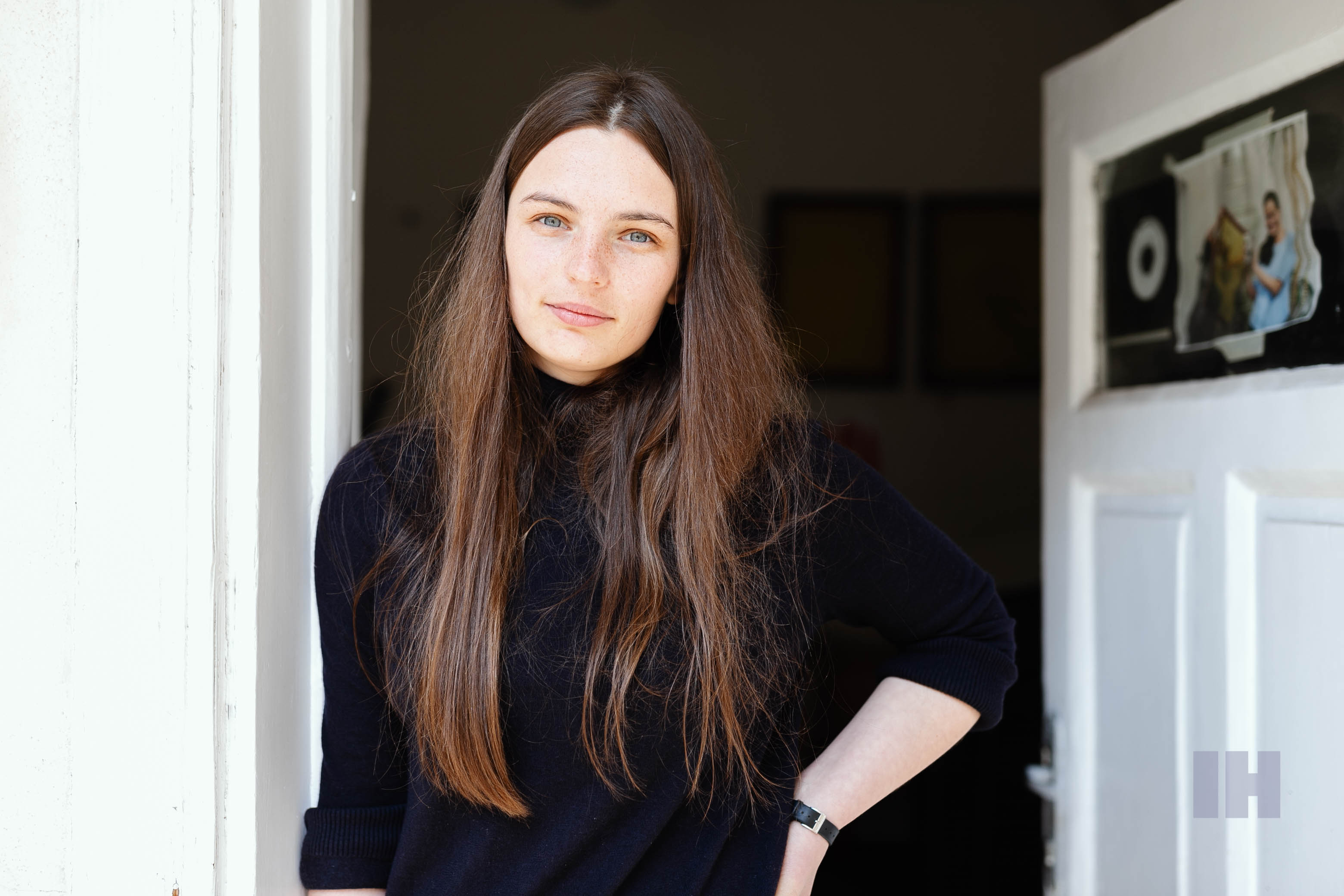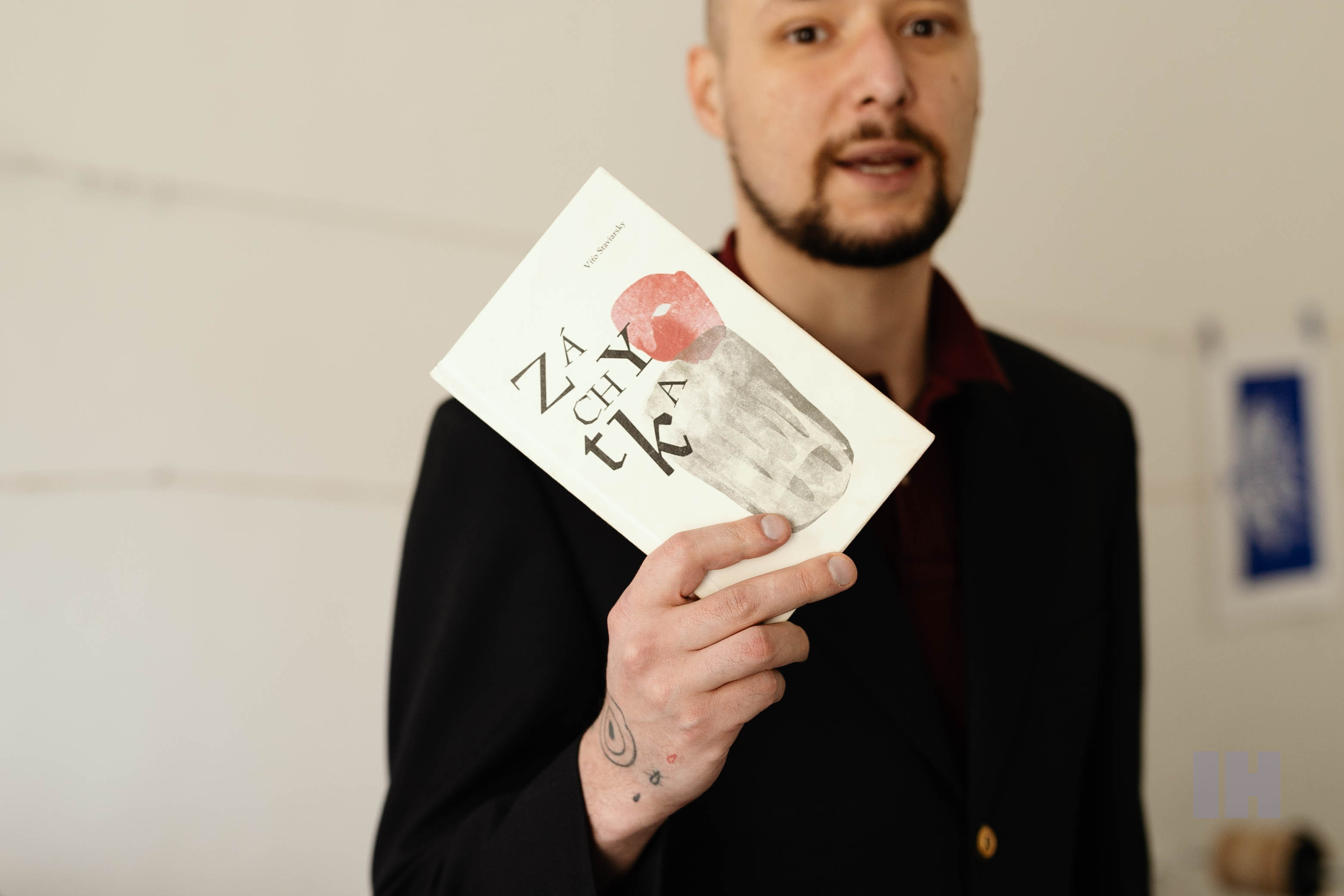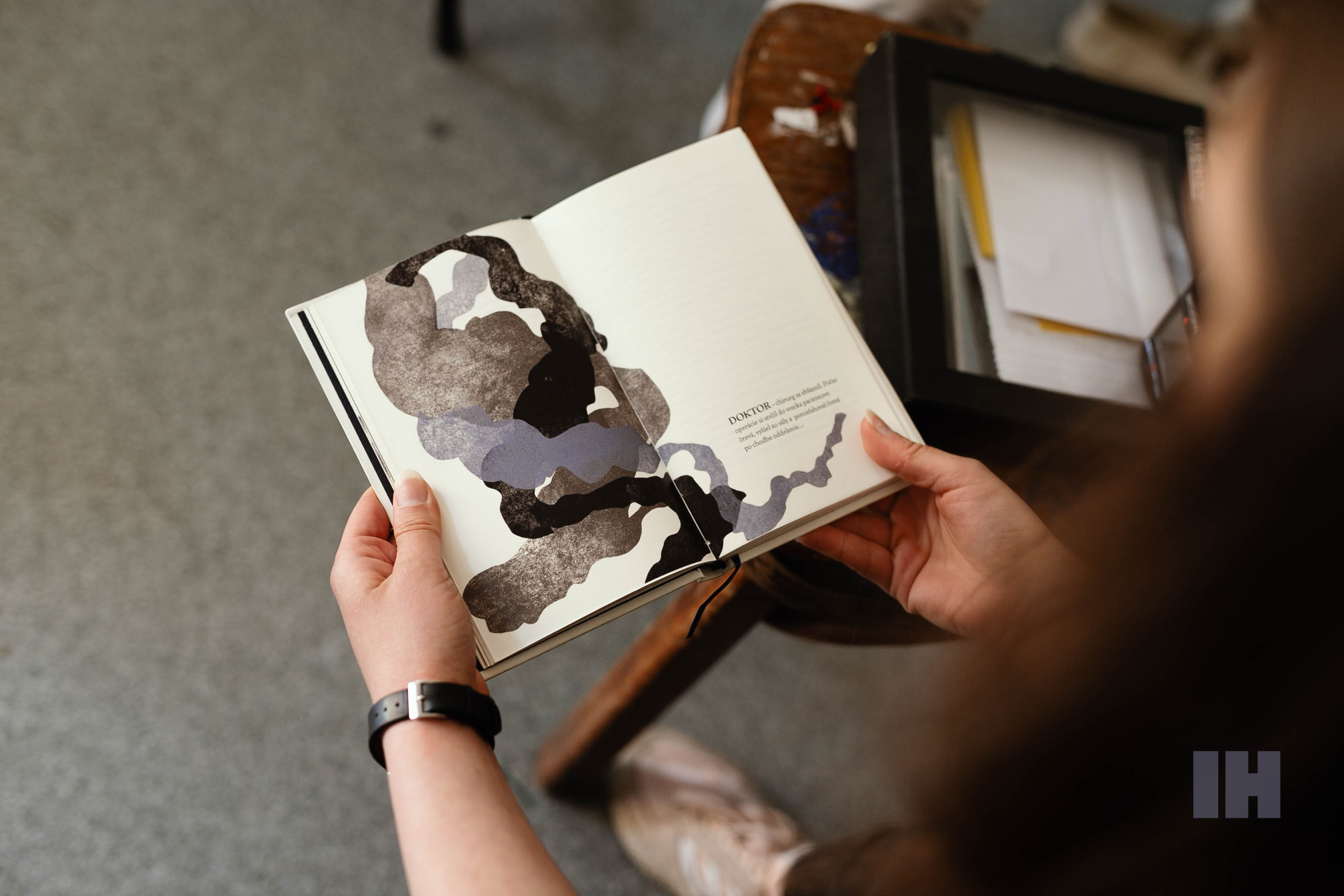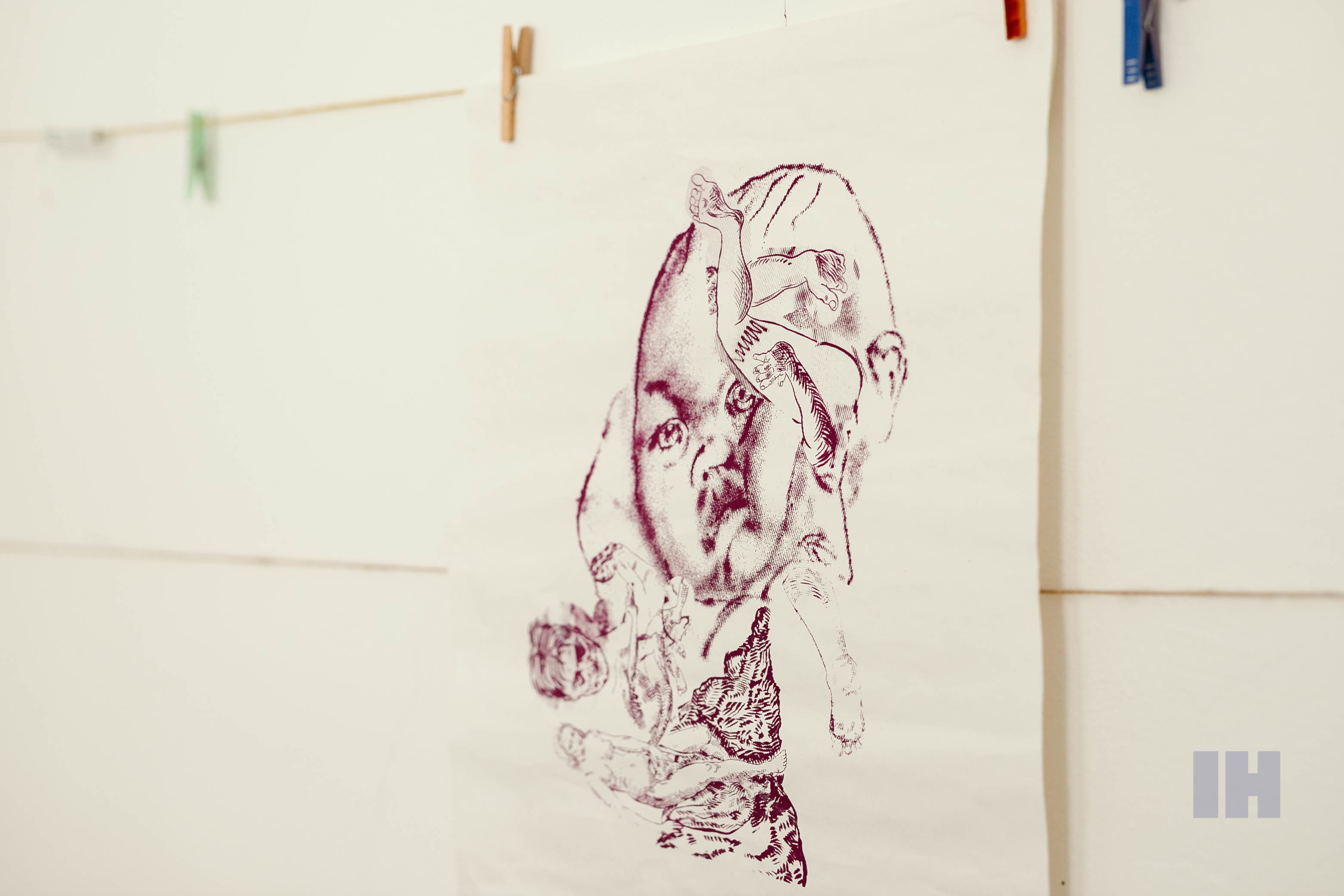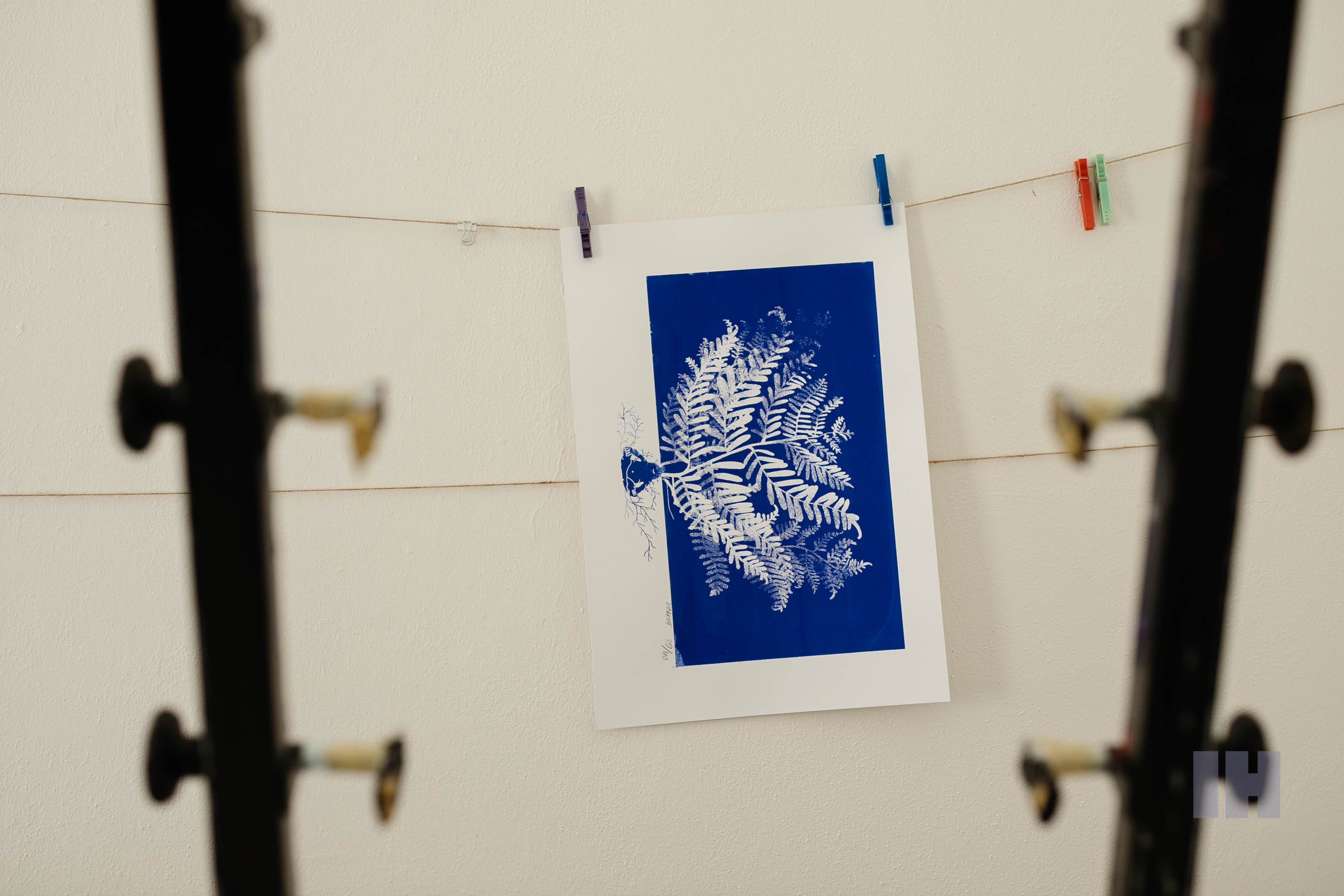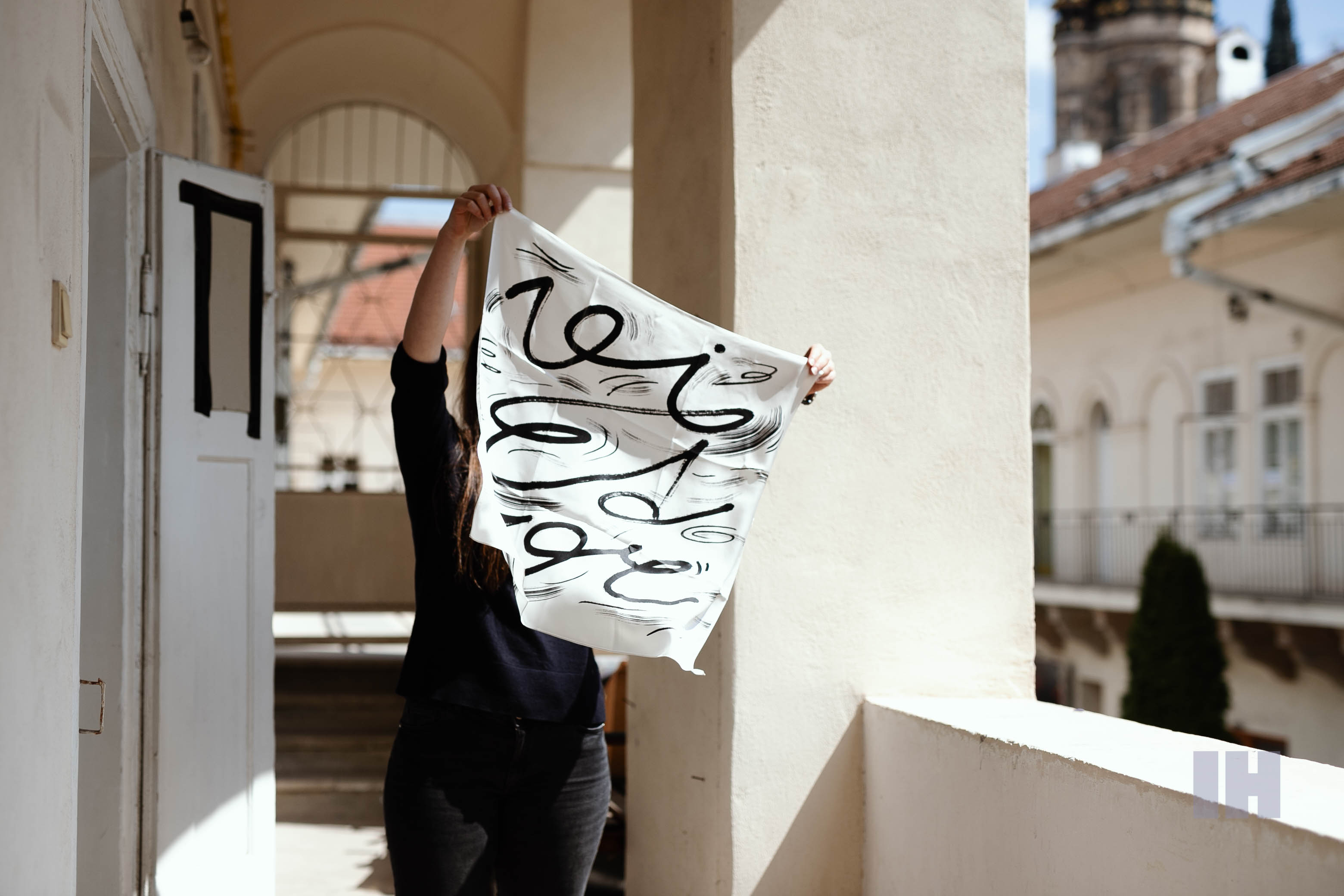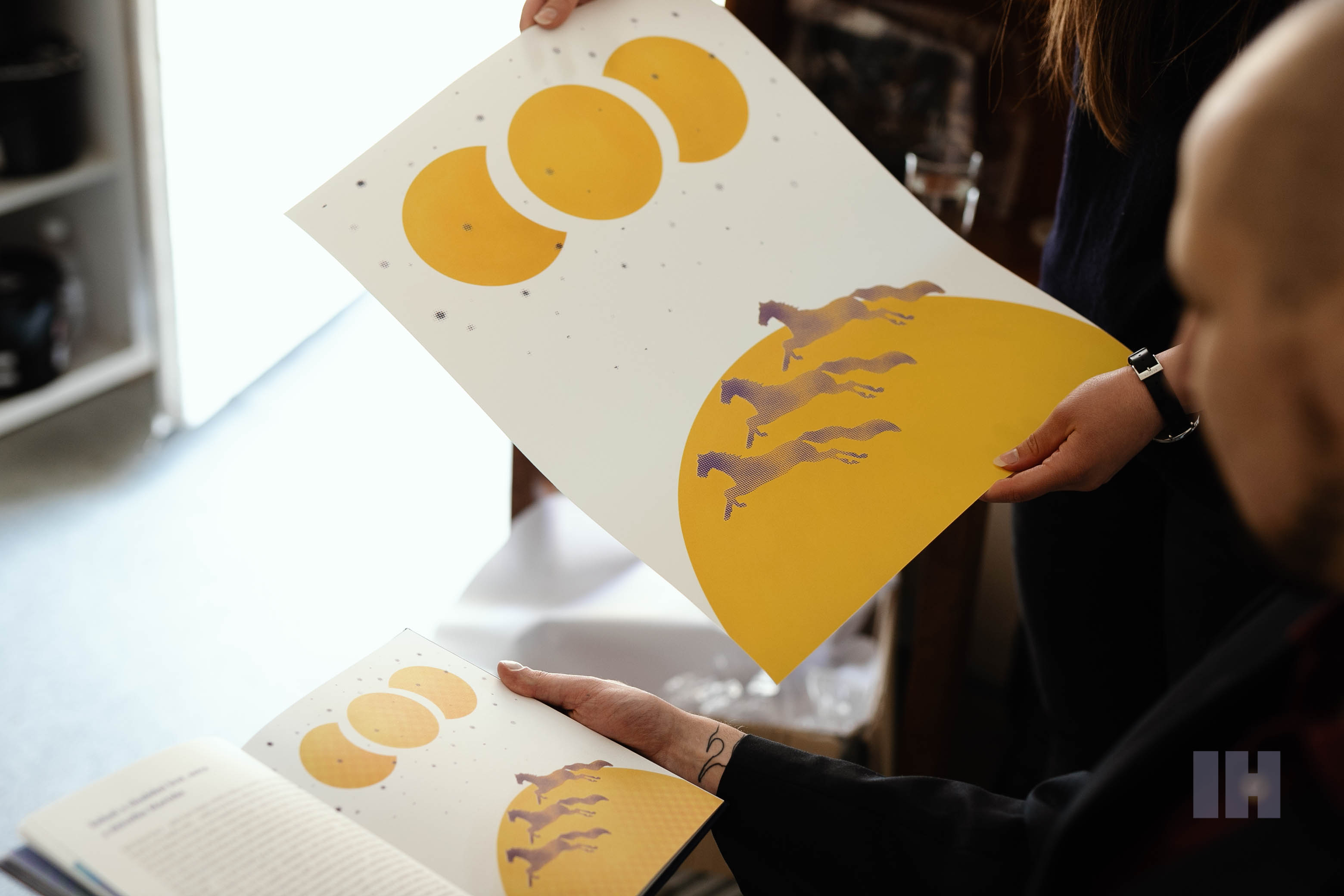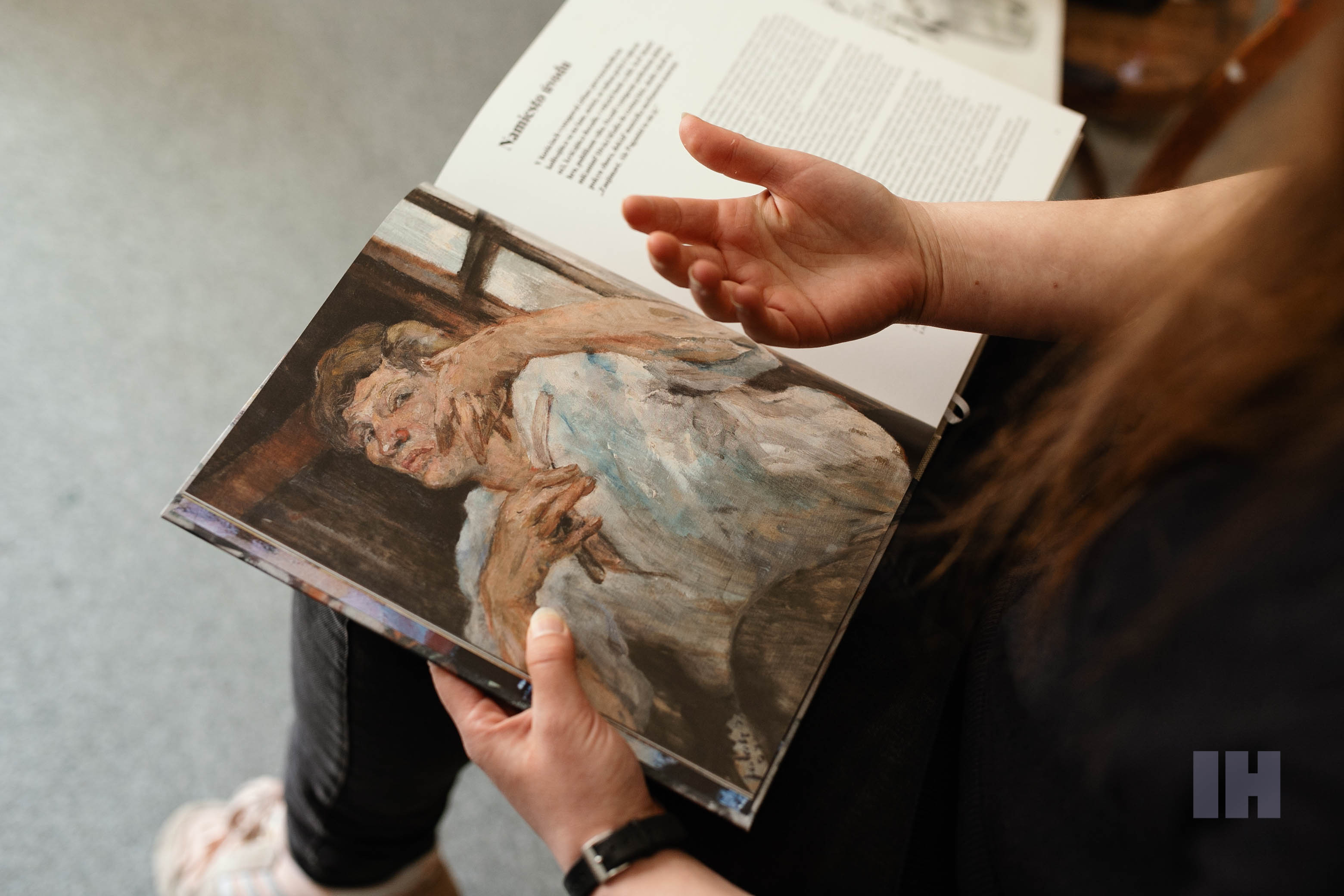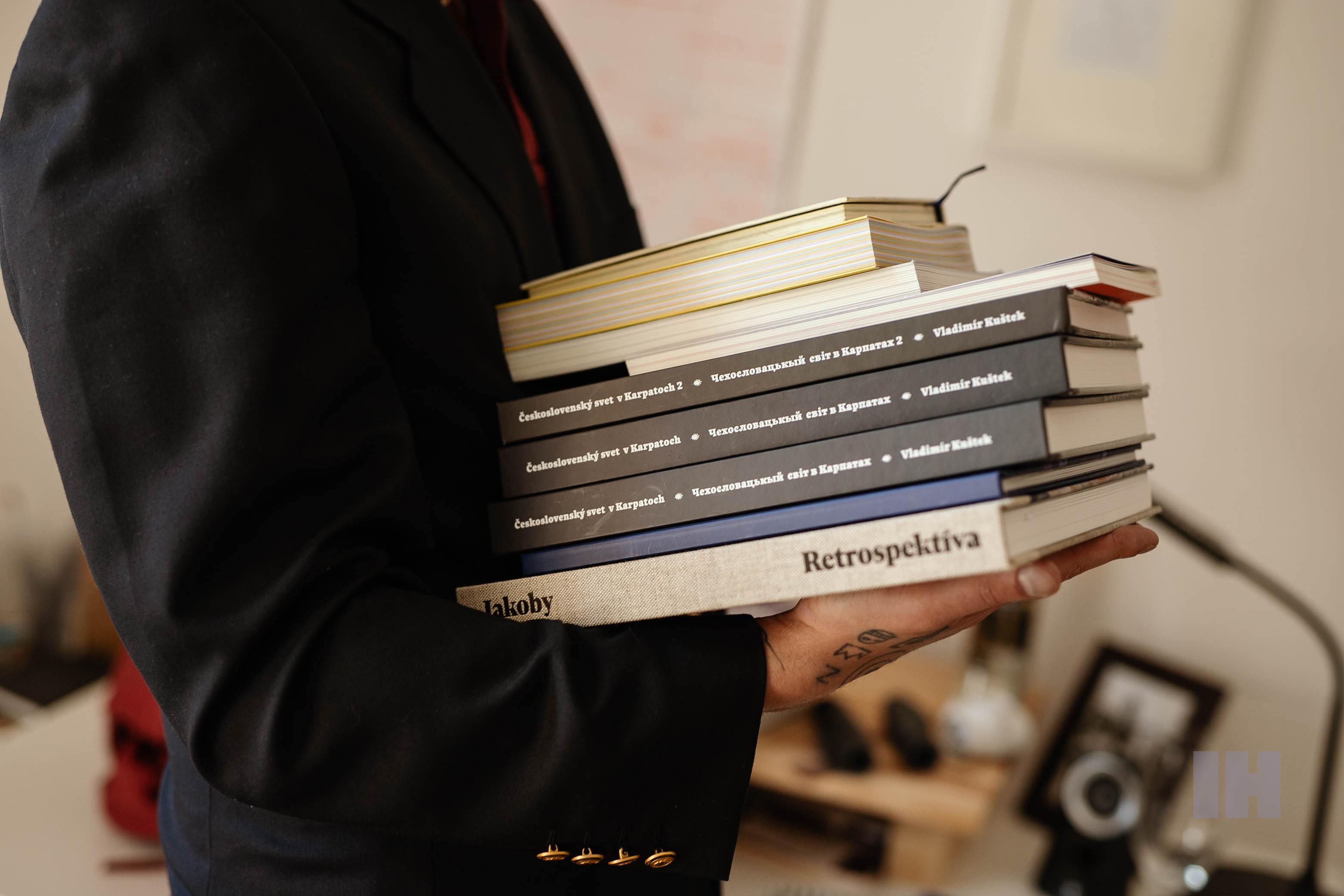Design is hard work! We talked to Katarína Rybnická about book design, Erasmus in Poland, the Katkat studio, and the Šopa Gallery
Katka is slowly opening the doors to her studio and screen printing atelier located in Vitézov dvor. We are instantly surrounded by a row of books, graphics, illustrations, and a dog Bob, who is very excited about everything. Katka shows us her favorite works, including lemonade labels, the graphic design of the book Commons, Between Dreams and Reality, and the eastern fairy tales Dze bulo Tam Bulo. The atmosphere of creativity and the scent of printing inks has a mysterious but very pleasant charge, as does our host, graphic designer, and illustrator Katarína Rybnická.
My most important work is probably Jakoby – Retrospective, but I prefer my first works
“Although I don’t have a favorite among my works, I really cherish the book Jakoby – Retrospective. Paradoxically, it was not nominated for any design award but won the Dominika Tatarka Award, which is the most prestigious literary award in our country. My favorite is probably Záchytka by Víťo Staviarsky because it was the first book I worked on. I think the first things you do are the most exciting. Not only because they boost your self-confidence, but most of all, you get honest feedback.
I started with books at university. It’s such a hipster story (laughs). At Artforum, which at that time was still located on Mlynská street, I bought Víťo’s Záchytka and read the entire book on the bus ride back home to Sobranice. I thought it was great; it just looked awful. Coincidentally, I was looking for a topic for my bachelor thesis at the time, so I chose to work on the graphic design of Záchytka. But I needed the text of the book. On Facebook, I found the Staviarsky family and convinced them that I would not misuse the text and not publish it myself.
When I had almost finished the book, I met with Víťo in Prešov. He wasn’t happy that he would have to deal with printing, publishing, and all the associated steps again. Which to be honest, I didn’t expect it at all. I just wanted to show him how the book turned out. Víťo liked my illustrations; he called them ’60’s illustrations’. This is mainly due to their graphic structure. It is a type of patina that appears in traditional graphics. Poles call it ‘ślady.’ It is important to me that the illustrations are not pathetic. Víťo’s stories are harshly true and have an atmosphere that captures the absurdity of Central Europe. So I didn’t want to make them descriptive but to underline the atmosphere of the text in them. The book’s publication took another two years, but I still have the first piece, although a bit captured.
Psia kniha, an illustrated book for children, which ‘participated’ in several exhibitions, is also very important. These are the first signs that will tell you whether you’re going in the right direction. That’s why I would highlight them.”
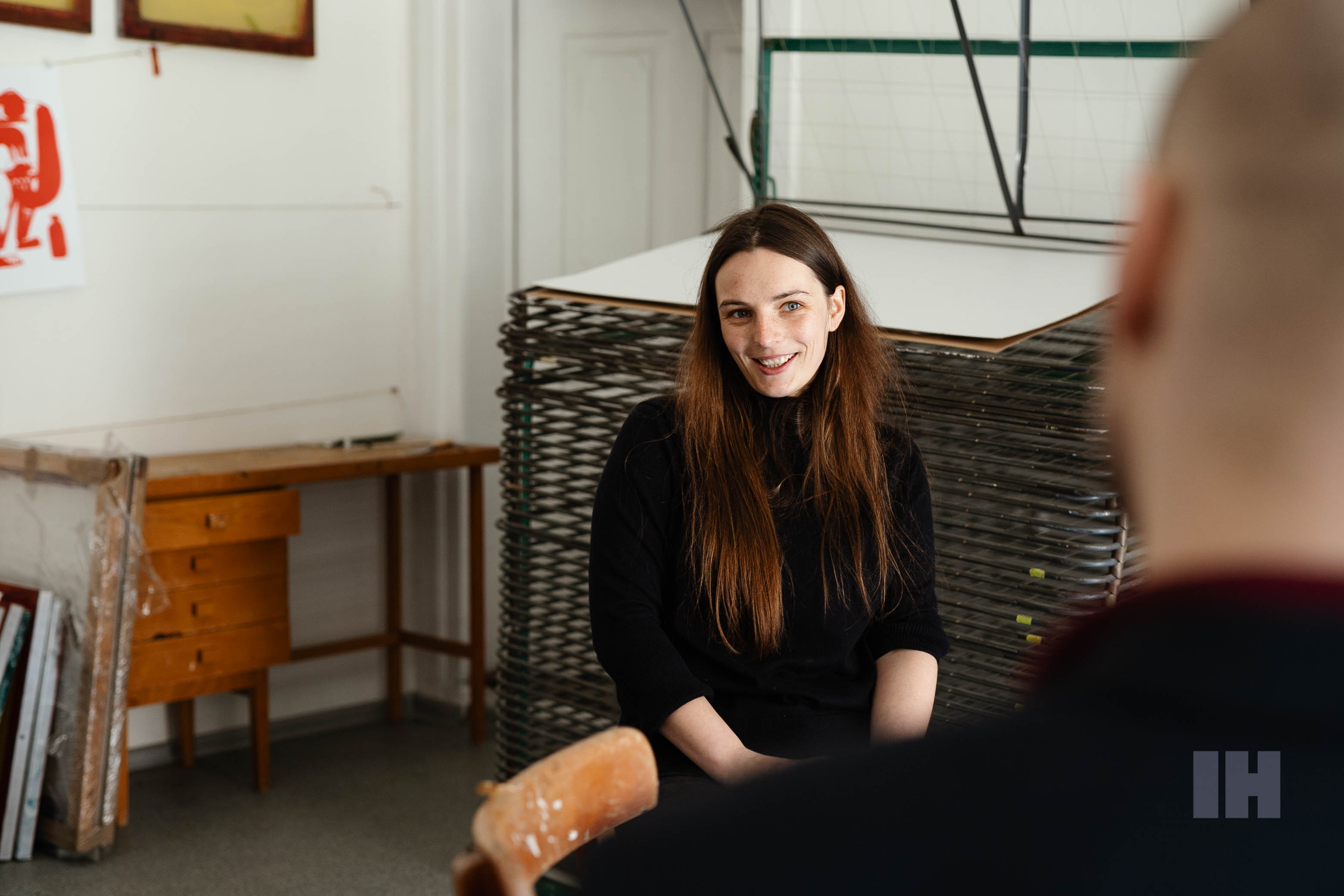
You just have to experience the east
“The ideas for my illustrations mostly come to me while I’m walking around. Now it’s a complete tragedy because I have a lot of work to do and I can’t do it as often as I’d like to. Anyway, when I walk around and think about it, I sketch. I sketch a lot and everywhere. These are not cool Instagram sketches; that’s not me. Paradoxically, when I look at the proposals and the finished work, they look very similar.
I also like to combine classic techniques with new ones. I made the cover of Jana Micenková’s book using the marbling technique, an old technique sometimes used for end-sheets. It was Jana who gave me the first feedback that she liked the designs I made for Víťo. Her book Blood is Just Water is also full of harsh poetics, so maybe she sensed that I could do it well. It’s a dark one, so we discussed whether to put illustrations in it at all.
Authors from eastern Slovakia create from a place of particular expressiveness. I can’t imagine that Micenkova’s or Staviarsky’s works would be illustrated by someone ‘nicely’ in the first place. You have to look at it entirely differently. You can’t do a pleasing, likable design. In my opinion, you need to experience the region’s character, in a local pub or with Víťo in Prešov. Otherwise, you won’t understand what those books are about. That’s why they may impress people who know how to understand the colors here.”
Katowice and Krakow taught me to be open-minded and not to be afraid to communicate any topics
“I was thrilled when I got the opportunity to go on Erasmus exchange to Krakow. I was there with a great group of people from Košice – me, Roman Juhás, Viktor Feher, Petra Housková, Zuzana Kutašová, and others. In Krakow, unlike Košice, I chose more graphic courses, i.e., not just graphic-design subjects. I appreciated that it allowed me to express myself through other forms of media. I was not the best student initially; I was a bit of a lost cause (laughs). I had a hard time going to university because I didn’t know how to ‘free my mind.’ Professor Kunce helped me a lot. He started bringing me his xerox collections, and he had so many as he collected them for years. There were some nonsensical things in there like a rabbit in boots, a hare with a hat, a lady with something on her head, just endlessly obscure and strange things, his own Codex Seraphinianus. He always put them on the table in front of me, saying that ‘Mrs. Katerzyno’, do nothing, just read it (laughs)!
It helped me a lot. Maybe I didn’t have any to show for it at the time, but it pushed me to think graphically. It taught me how to ‘feel’ images, connect and work with them. After Krakow, I returned to Košice to finish my bachelor’s degree.
At home, I had the opportunity to study in the studio of Prof. Marian Osliss from Katowice, our design guarantor. He was very supportive of my work. Under his leadership, my work in Košice really started. Professor Oslis laid the basics for me in the typography and illustration of books, especially conceptually. He asked me, ‘Why are you doing this? Why not do it differently? He didn’t just say, ‘Do it like this!’ But he asked and explained. He was the one who suggested I go on Erasmus to Katowice, to which my reaction was: ‘Sure, I’m going!’
The difference between Katowice and Košice was mainly in the pace of work. For example, in Košice, you have one main studio; in Katowice, you have six. I Košice, one poster per semester, in Katowice, it was one per week. It just worked there. We made one book during one course, another book during another one, a video for the third, and submitted photos for the fourth. It was difficult, but you could see that they were glad to have you there, plus the school was very well equipped. Katowice also trained me in storytelling. It was not explicitly filmmaking or screenwriting, but the conversation about telling a story took place on another level, mainly due to my teacher Krzysztof Zygalski. Krzysztof enjoyed likening situations in the story to physics or philosophy. I also liked the typography with Tomasz Bierkowski, who gave fascinating lectures. He was not afraid to go into more controversial topics. For example, how to properly communicate the Holocaust or other very sensitive moments from Polish history or the present. It was extremely interesting to deal in depth with the issue of form and content. That’s what I think a college should look like.”
Endless journey in the footsteps of Július Jakoby
“When you make a book, you have an editor, and you want to have an editor. Especially when working on a book that is made up of reproductions. For example, the editor determines the key by which you decide whether the reproductions will be organized chronologically or thematically. These decisions form the final visual appearance of the book. When the editor tells you that this reproduction must be in a specific place because otherwise, it does not make sense, then you simply have to meet that condition.
I consulted Daniel Liška, who had the main say about the size or location of the reproductions. We also weren’t able to enlarge individual reproductions due to copyright. It was up to me to come up with a system for arranging illustrations and text. The book consists mainly of a passage Instead of an introduction and interviews. So it was essential to differentiate between visual conversations and organize them in a way that they read smoothly.
The book Jakoby – Retrospective was a great experience for me, but the work on it was extensive. I’ve been working on it for over a year. Daniel has been compiling materials for it for over three years. All the knowledge he was trying to pass onto me, and all that he wanted for the book to contain, was interesting and beneficial, but there came a time when the process had to be stopped, and we had to move on. On the one hand, working with Daniel is very easy, but very difficult on the other because he is a perfectionist. It’s excellent, and it should be that way, but he wanted to add something and expand the publication indefinitely, thanks to this. He wanted it to be perfect. Sometimes I felt like we would never finish it. There was a moment when I said on December 23 at ten o’clock that I wanted to have a Christmas day, and I didn’t want to work on Jakoby anymore (laughs). So there were some difficult moments. But in the end, our work was worth it.”
Katkat studio connects Slovakia and Sicily. We collaborate on almost everything from book design to branding projects. Creativity is business like any other
“As for work, I don’t like differentiating between commercial and non-commercial projects. What matters is how you approach it. For me, commercial means you get paid for it, and that’s not bad at all. It depends on how you spend the money. You can simply invest them in your projects and needs. You don’t have to be a person who suffers and publishes books at all; you can be a successful person who publishes books. I think you can do good work in less profitable projects or, conversely, in those that earn you money. I don’t select it at all. I always try to adapt the design to the people who will use it.
What needs to be addressed is a ‘business plan,’ i.e., invoices, spreadsheets, and accounting. A person who does not do this is doing something wrong. I’m not in ’30 under 30 ‘, but I’m trying to work in Košice with what I have. The first years are always harder, but when you gain experience and references, it gets better. It sounds like a cliché, but it’s really like that, you have to do it and experience it – both the good and the hard.
It’s not that we designers, artists, only do it when we have a muse. Creativity is hard work! In the morning, you sit down and work. You do it even when you are angry, even if you have no idea, even if you do not have inspiration, a deadline is a deadline. You have to be able to overcome difficult times when you can’t. It’s a business like any other.
As for the Katkat studio, its name originated as a mispronunciation. When I told my friends from France at Erasmus in Krakow that my name was Katka, they didn’t associate it with Katarína and called me Katkat. It became an inside joke. When I later started a company, I had to give it a name. And since in Czechoslovakia, all the names that end in ex are no longer in use, I decided to call my studio Katkat. After all, I’m not going to lie about it when that’s the case when it is.
The second-year during my studies in Katowice, I lived with Katka Štefanková. We discussed and helped each other in school projects. We became good friends. Katka then went on to Erasmus in Sicily, where I went to visit her. Since then, we have been working under one brand. Katka stayed in Sicily with her boyfriend, with whom she regularly migrates from Sicily to Slovakia and back. The last time we worked together was on a Košice children’s passport or a book for Greenpeace. Those overlaps are not everywhere, but we both operate under one brand.”
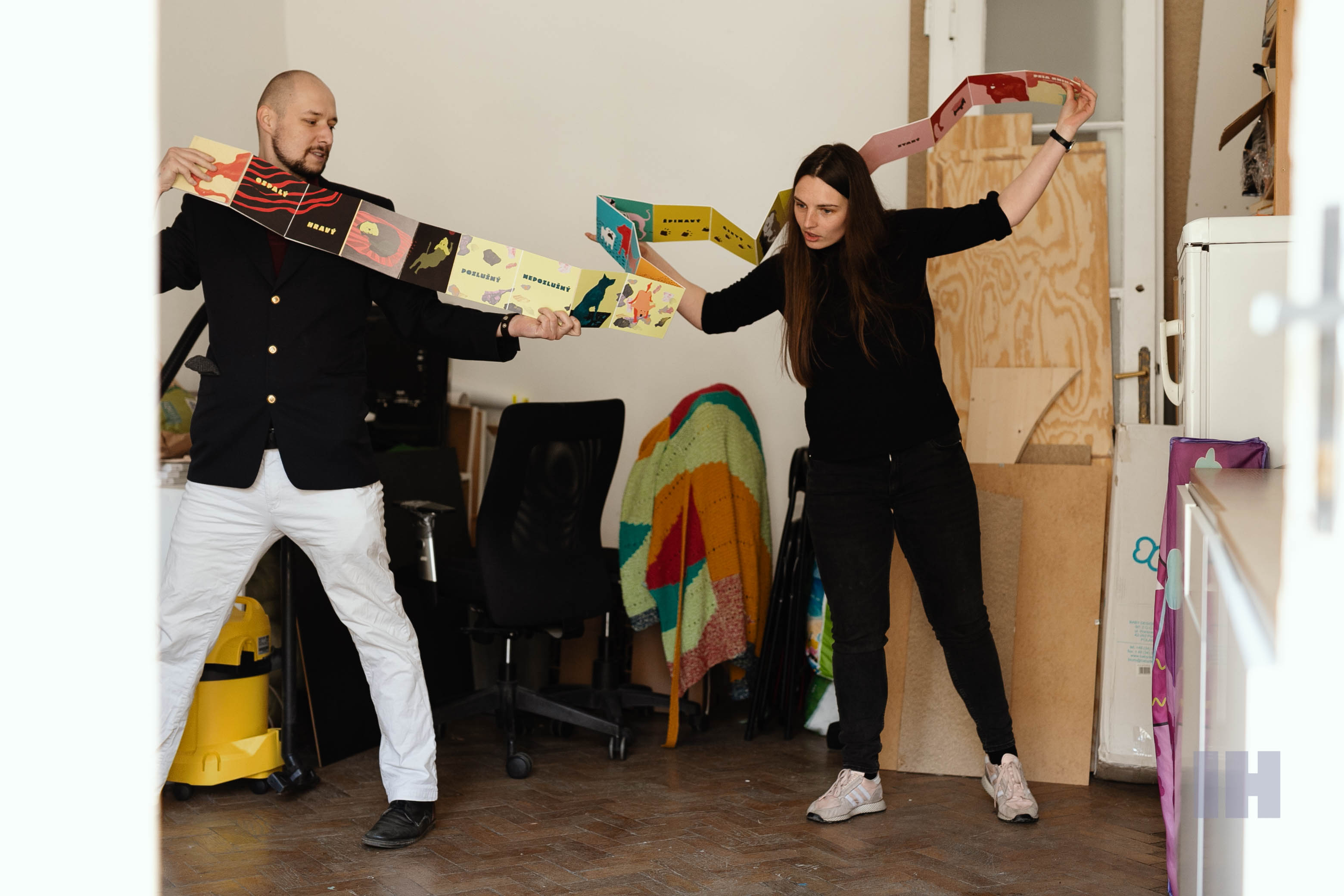
Šopa is open to anyone interested in learning something new. KAIR brings people to Košice from whom we can learn
“The idea of a screen printing atelier originated in ‘prehistoric times’ when Petra Housková and I were in Krakow. In front of the Šopa gallery, there was the Pyecka gallery. The gallery expanded since we took over adjacent space, which later became residential studios for KAIR.
When I finished my studies, Petra came to me with a proposal to see if I could help her with bookbinding workshops and a screen printing workshop.
We started very modestly with one screen and a halogen lamp. Later we bought a table, and we build the equipment ourselves. For example, Adam Alezár made an exhibition box designed by Czech graphic artists from the Uutĕrky screen printing atelier. We did not come into being by chance; we worked on it systematically. What we see here may not be ideal, but it is the result of the efforts and steps we took in the past five years. We are not a commercially oriented screen printing studio, mainly because we are small. Our capacity is around 50 prints, so if we ‘rent’ the studio, we prefer renting it to artists for specific projects. We are oriented more educationally because one of the goals of Šopa is to educate. It makes more sense to teach than to print custom stickers.
Through workshops, we often respond to a specific exhibition and they are attended by friendly people who are interested in it. This is maybe because the screen printing course itself is more expensive than other courses and workshops. So you communicate with people who want to learn, and you don’t have to overcome lethargy. I like to teach people who enjoy it and soak up all the information.
We will take a maximum of four participants for one course, so we have time to for each of them, and we do the courses three, four times a year, which I think is adequate in Košice. There is interest so far, and I hope it will continue.
Another organization based on the same premises is K.A.I.R. – Košice Artists in Residence. It’s a massive thing for the city because international artists with different experiences and knowledge have been coming here for ten years, so we don’t have to travel to learn from them. It is also a passive reception of new stimuli (laughs).
Although the general public may not notice the presence of residents so much, we try to connect them with the local professionals. Excellent examples are Imrich Veber from the Czech Republic, Kaoru Furoko from Japan and Tamar Nadiradze from Georgia, who like to come back here, or the Berlin artist Abel Korinsky, who will come to visit soon. These artists form strong ties and connections here, which is good for them and us.”
